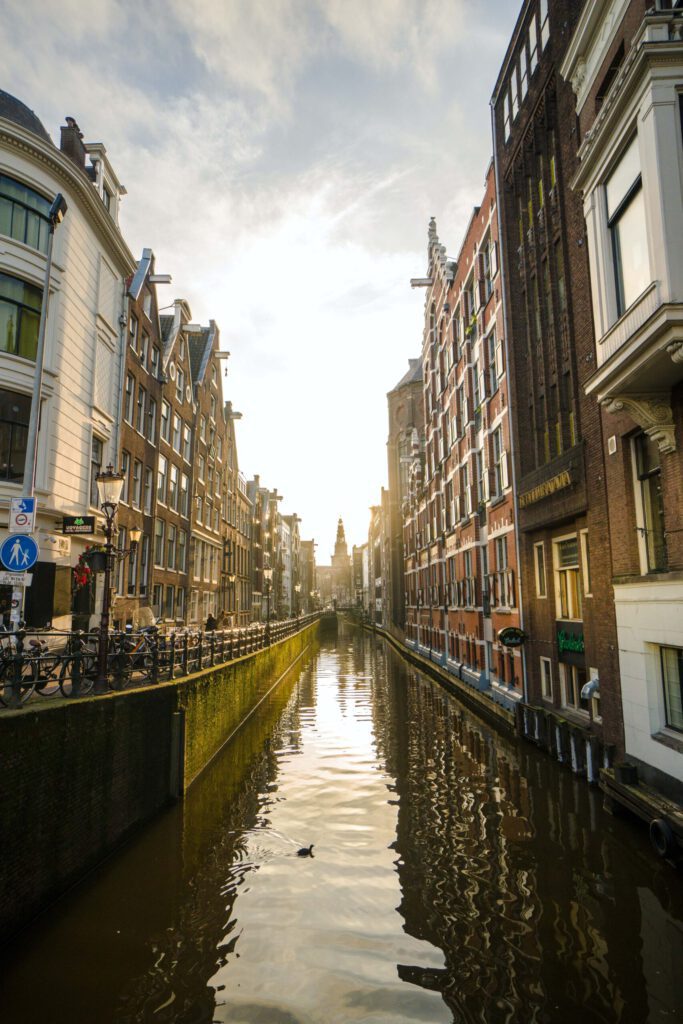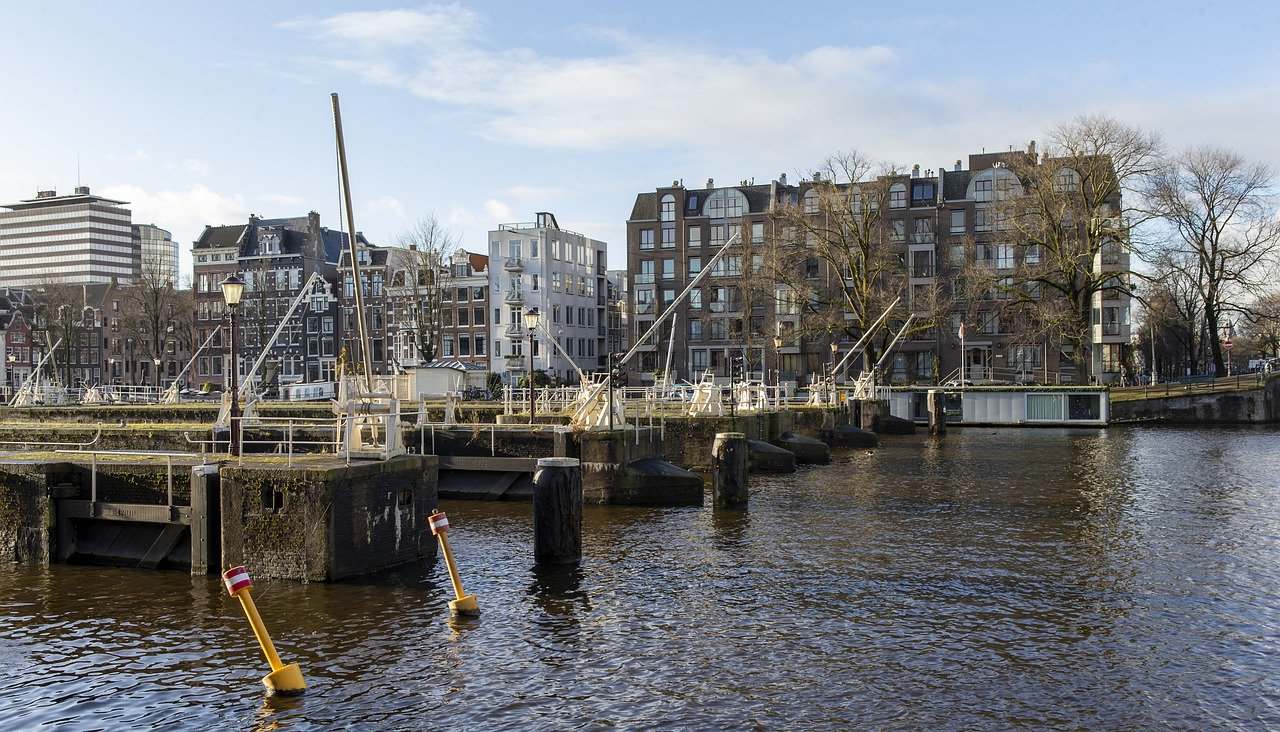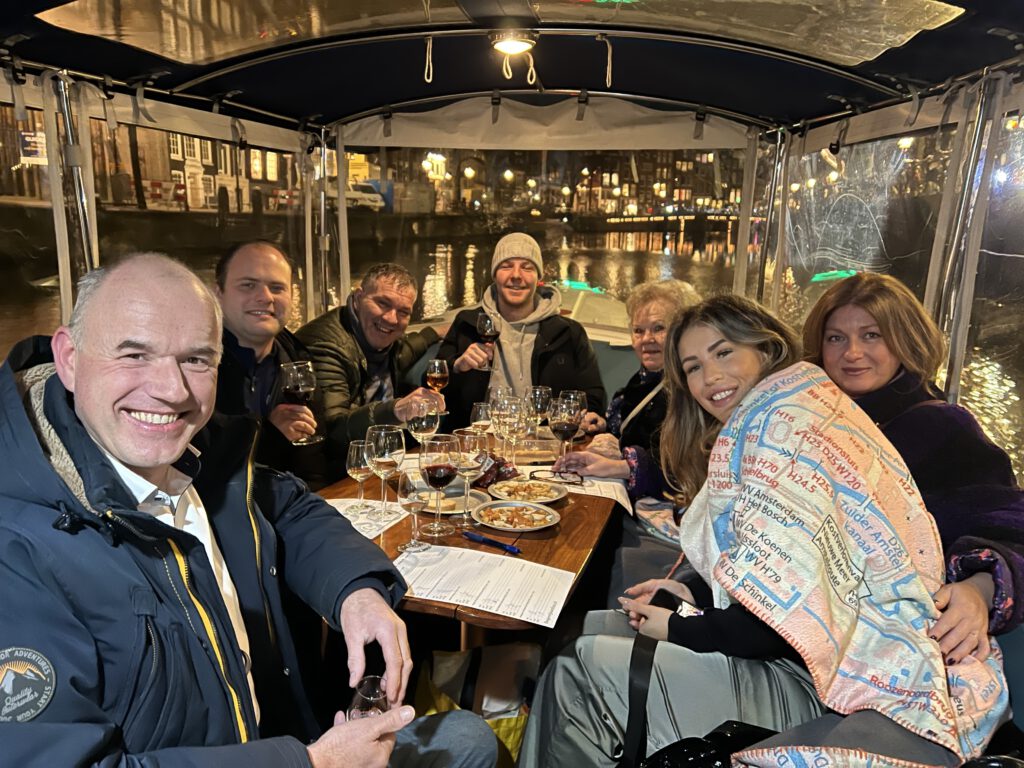Water. It has been Amsterdam’s lifeblood ’s since the city’s inception. In truth, the canals were a truly revolutionary technology when they were built; allowing the city to move goods by water instead of horse and cart and through that become one of the world’s greatest trading cities.
And yes, the word ‘technology’ is certainly the correct one. For while it might appear the hardest question in canal building is how to build brick walls underwater (You don’t. You build the wall first and afterwards add the water) there is a lot more involved.
You see, though it might not look that way, the whole system is constantly moving. Not the canals themselves, of course. It’s not like we wake up some mornings to find that they’ve decided to start flowing down a different street. But the water within them.
And that’s a good thing, seeing as stagnant water is problem water. Especially as for the longest time Amsterdam didn’t just use the waterways to transport its goods but also its sewage. Yes, you read that correctly. Hey, at least we threw it into the canals instead of the middle of our streets! At least our system flushed!
This flushing is achieved was through an ingenious set of locks and dams, which make it possible to send water through the different canals. In this way, they can strengthen or lessen the water flow and drain out the city’s waste.
This system of locks was also one of the ways the city defends itself against water. As it allowed the city to restrict how much water flows in and out. But in truth, that’s really the last line of defence as the best way to make sure the city doesn’t flood is by making sure the water doesn’t get here in the first place.

The Dikes
You’ve probably all heard of them (and the boy who put his finger in one) and they were pretty much the first defense the Dutch built. Initially, they were private projects with towns, lords and the church all building their own dike projects to keep the water out and win land.
A lot of different systems were tried, but at their simplest, they are elongated hills of sand, much like the natural dunes which protect the Dutch coastline (which is probably where the Dutch learned the idea in the first place).
But dikes aren’t just hills of sand. Instead, you need a way to take the water from one side and deposit it on the other. One clever way the Dutch do this is through culvert. This invention uses the tides to transport water from one side to the others. Basically, the culvert allows water to only go one way. This allows water to flow out when the tide is low but prevents it flowing the other way when the tide is high. In this way, it was actually possible to keep the water on the land side below the average level of the sea.
In fact, the Afsluitdijk, which is a 32-kilometer dike that dammed an actual sea (okay a small one) works by this system to deposit water into the sea and prevent seawater from flowing the other way. As a result, the Zuiderzee is actually no longer a sea! Instead, it’s now a sweet water lake! We even changed the name to IJsselmeer Neat, right?
The Afsluitdijk is very important for Amsterdam as before it was built, storms would sometimes whip in through the Zuiderzee and batter the city. With the dike in place, that no longer happens.
The pumps
Though these culverts are clever, they only really allow water near sea level to be pumped out. If you want to go lower, you need another system: The pump. In the beginning, these were basically foot pumps, like when you try to inflate your air mattress without electricity. Though naturally not even close to as effective, as we didn’t yet have things like plastics, rubber and airtight seals.
Then the Dutch invented the wind pump – also known as the wind mill. Yes, that’s right. Many of those famous windmills that you see the pictures were meant to win back land from the water! Only later did we start to use them to cut wood and such.
Later we started using steam and electric pumps. But they’re not quite as picturesque as the windmills so you don’t hear as much about them. Did you know many of our pumps have to work continuously to suck up the water? If they’d ever stop, the water level would start rising immediately, in which case it’s a good reason the Dutch are so tall. There is even a (not very serious) theory that that is why the Dutch are the tallest people in the world.
The Rivers
Of course, it isn’t just the sea that delivers water to our country. The rivers do so as well. And, in a sense they’re more difficult to control. After all, while you only need to keep the sea out, that’s not possible with the rivers. They have to be allowed to go through and deliver their load to the sea.
Despite this difference, for the longest time, the Dutch used the same system to fight the rivers. They built high, strong dikes that would keep the water in the rivers and away from the land.
But about 20 years ago, the Dutch realized there was a problem with this strategy. Sometimes, a lot of water comes down the river and it has to go somewhere. Don’t give it the space to do so, and it will create it itself! This could lead to disastrous flooding, with dams breaking and whole cities being inundated with water.
As a result, the government has in recent years been following a new strategy called ‘room for the river’. Basically, this means that they create space for the water to go. For example, they’ve moved the dikes back from the river’s edge, so that the river can overflow some land. If that’s not enough, they’ve created natural weak points where the water can flow into certain regions so it won’t flow into others.
And then there are the ‘green canals’, which are basically areas which are normally dry but can be turned into waterways if the need arises. In this way, water can be safely diverted away from cities and into these safe areas. into these areas so that it doesn’t even reach major cities like Amsterdam. In effect, it’s a grand strategy of prevention instead of treatment.
It takes a whole country
The final strategy the Dutch use is to consider flooding not at a regional level but at a country wide level. That’s vital, because water has to go somewhere and it doesn’t much care about lines people draw on maps.
Of course, it wasn’t always like this. For the longest time, the Dutch tried to deal with problems on the communal level. But this often created more problems than it solved. For example, when one community built a higher dike, this could lead to flooding further up river.
Eventually, (and this took centuries) the Dutch started to work together; seeing the protection of Amsterdam as part and parcel of protecting the whole country. And it seems to have worked. The Netherlands hasn’t had a major flood since 1953. That’s quite something for a country where large parts are under water, wouldn’t you say?
The Dutch have even turned flood protection into a business! Exporting what they’ve learned to help other countries deal with their water problems. Now if that isn’t making lemonade, I don’t know what is!
Want To Hear More Stories About The Dutch Water Protection System?
Come on one of our tours to ask all your questions about Amsterdam and the Dutch water management.


